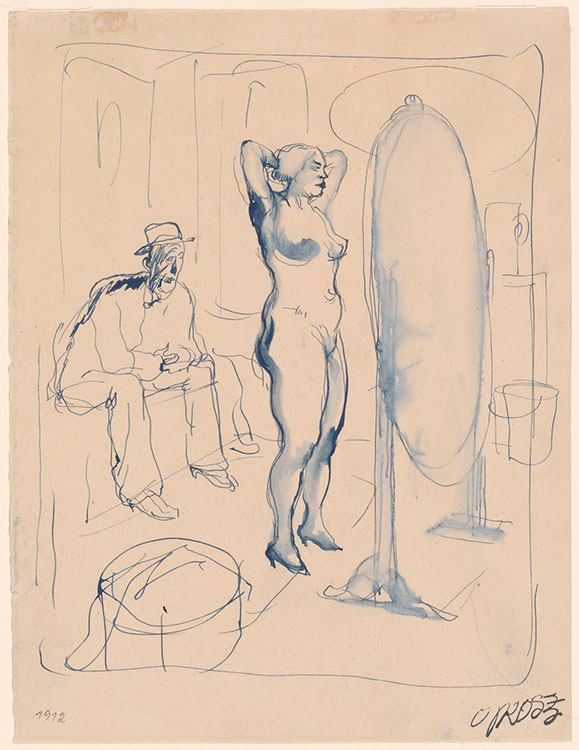
In 1912, following his artistic training in Dresden, George Grosz moved to Berlin and soon began working as a caricaturist and illustrator in order to earn money for his "everyday needs." Abandoning the studied formality of his Dresden period, Grosz's early Berlin drawings are rapidly sketched, free studies out of which urban grotesqueries of lust, greed, and violence emerge. In "A Naked Woman Before a Mirror," Grosz depicts a contemporary brothel scene. A voluptuous female figure, adorned only by a pair of high-heel shoes, adjusts her hair before an ovular mirror, while a male client, perhaps a surrogate for the viewer, lewdly gazes upon her. Together, the figures present a voyeuristic portrait of licentious sexual desire, which for Grosz was emblematic of the larger unraveling of modern German society. There are signs of binding along the left edge of the sheet, suggesting it may have been removed from a sketchbook, a possibility supported by the highly simplified composition and the vivid sense of frenetic haste captured in Grosz's line. Related Literature: Ralph Jentsch, George Grosz: Berlin-New York (Milan: Skira, 2008), esp. pp. 39-56; Ralph Jentsch, George Grosz: The Berlin Years (Milan: Electa, 1997).
Inscribed at lower right, "Grosz" [estate stamp]; at lower left in graphite, "1912"; stamped with the Grosz Estate Stamp (George Grosz Nachlass) on verso at lower left and numbered "3-27-10".
